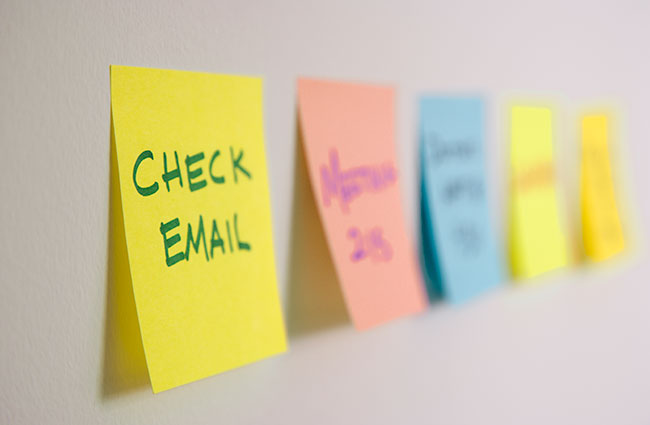Do you live in a 200-emails-a-day world? Do you delete emails based solely on the subject line? Or merely skim the contents of most emails? Or automatically discard email from certain senders? Maybe you hit ‘5’ on your mobile phone to skip through long voicemails. More and more information gets ignored these days—and this sometimes results in critical matters not receiving the attention necessary.
Our workplaces have become increasingly leaner, with fewer people handling ever-growing amounts of work. Managers are working more hours than before. Many employees devote considerable time to work after hours, checking email and voicemail. With 24/7 Internet access, we need a strategy to process the sheer volume of information we receive to ensure we allocate our attention effectively.
Here are five strategies you can use to better manage your attention—and that of your employees.
- Control your gray mail—email generated from newsletters, coupons, discounted airfare, social media and more—with a productivity app like Unroll.me or SaneBox. These apps bundle the gray mail into a single summary email so you just need to scan one message instead of dozens of individual ones. Some productivity apps even handle the unsubscribe process for you on request.
- Use the Bottom Line Up Front (BLUF) principle when composing email. State the purpose of the email at the beginning, without all the details. End the email with your request for action. If the email is informational, your readers can opt to read it later. And if it requires action, they will be more likely to give it attention.
- Get less email by sending less email. Sometimes a quick walk down the hall or phone call will accomplish something in far less time than sending emails back and forth.
- Be judicious. If an email goes out companywide to remind everyone of a deadline and you reply all to say you’ve met the deadline, you’ve just generated dozens of unnecessary emails for others. Become more mindful of who needs to receive an email and who needs to see the reply.
- Remove heated conversations from the kitchen. Email can easily be misinterpreted, resulting in unintended consequences. Save the controversial topics for a face-to-face meeting or phone call.
What will you do with the time these strategies free up? Hmm . . . why not build, create, innovate, dream. . . . Focus on the things that truly make a difference for you, your organization and the world!
What strategies help you manage your attention? Please share.






For #4, consider putting an expectation on the e-mail sender to address the email as “BCC” to everyone, so that replies to the e-mail only go to the sender, not to everyone.
Hey, Ron – I love this! What’s better than all the important action-related information up front?!
Great stuff Chris.
When I am working on a document or deliverable, I close my internet browser and ignore emails, texts and facemails. This enables me to focus on the task at hand and not get sidetracked.
A great tactic, Jamie. I know it’s hard to unplug :-) but it truly gives you space to concentrate on tasks at hand. Keep up the good work you are doing!
I often put the deadline in the subject heading.
That’s a great idea and I do the same. That way, it’s easy to scan and know when you need to react.